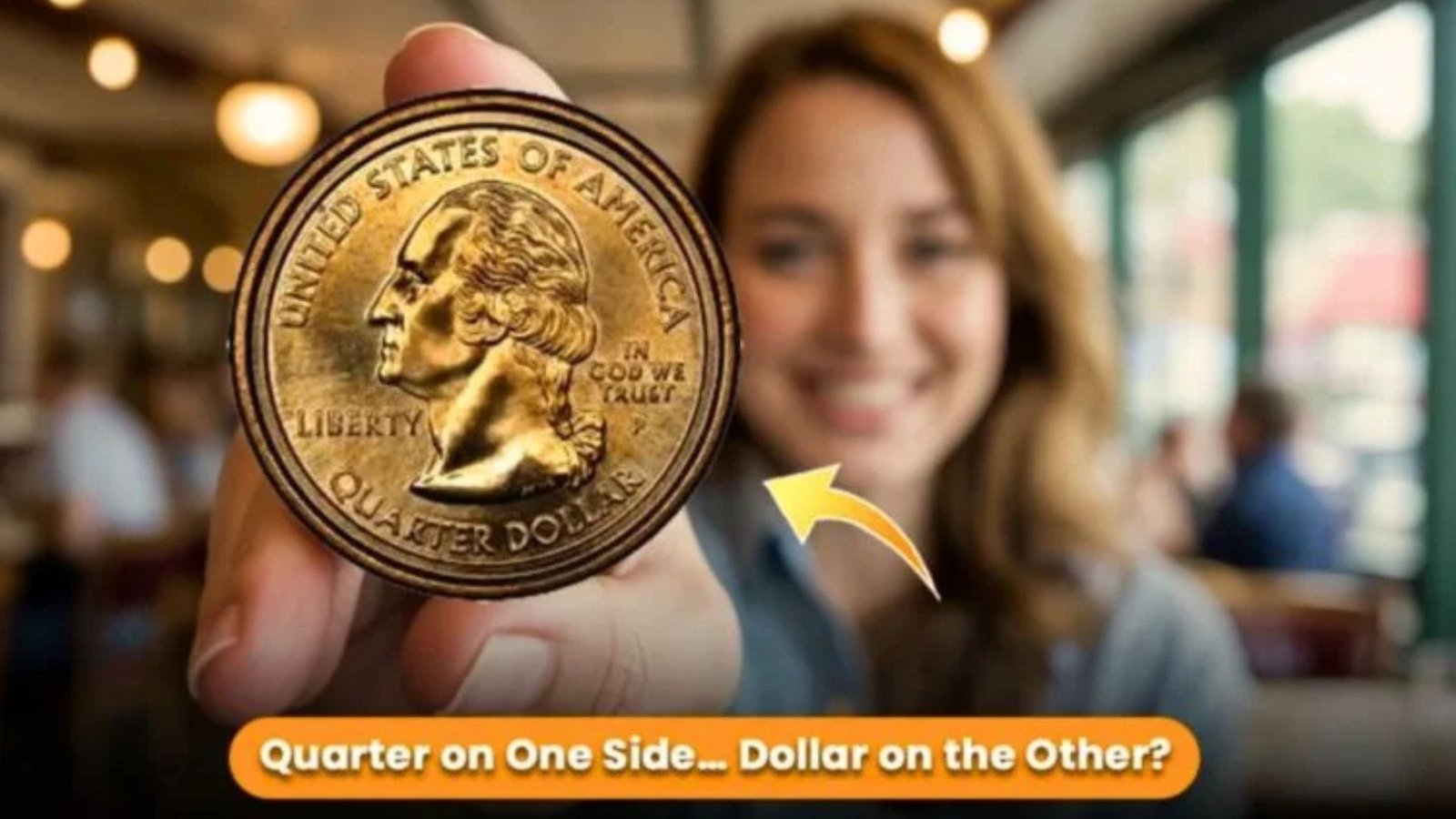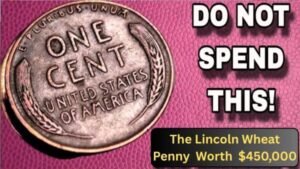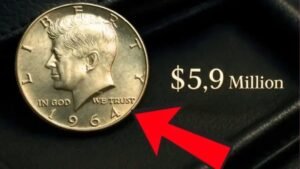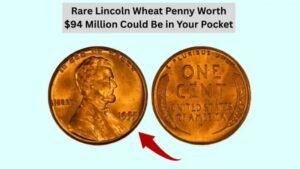Imagine finding a dollar coin in your pocket that’s worth $10.2 million! The Sacagawea Dollar, a golden-colored U.S. coin minted since 2000, honors the Native American woman who guided the Lewis and Clark expedition. While most are worth just $1, rare versions with unique errors can fetch millions at auctions. This SEO-optimized guide explains how to spot valuable Sacagawea Dollars, like those with mule errors or special Cheerios designs, in simple English. Whether you’re a coin collector or just curious, this article will help you hunt for these hidden treasures.
What Is the Sacagawea Dollar?
The Sacagawea Dollar, often called the “golden dollar,” was introduced in 2000 to replace the Susan B. Anthony dollar. It features Sacagawea with her baby on the front and a soaring eagle on the back. Though not widely used in daily transactions, these coins are common in vending machines, change jars, or bank rolls. Rare coins, especially from 2000, with printing mistakes or special editions, can be worth thousands or even millions.
Why Are Some Sacagawea Dollars So Valuable?
Certain Sacagawea Dollars are prized by collectors because of:
- Minting Errors: Mistakes like the mule error, where the coin has a state quarter’s back, or the Wounded Eagle, with a line across the eagle.
- Special Editions: The 2000-P Cheerios Dollar, included in cereal boxes, has a unique, detailed eagle design.
- Condition: Coins in uncirculated (almost new) condition are worth more.
For example, a 2000-P mule error coin, with a state quarter reverse, sold for $10.2 million in 2025, as only 19 are known to exist.
How to Spot a Valuable Sacagawea Dollar
Finding a rare Sacagawea Dollar is like discovering a hidden gem. Here’s a simple guide to check your coins:
Steps to Identify Rare Sacagawea Dollars
- Check the Date: Focus on coins from 2000, as most valuable errors are from this year.
- Look at the Mint Mark: On the front, near the date, check for a “P” (Philadelphia). Rare errors are often 2000-P coins.
- Examine the Back:
- Mule Error: The back shows a state quarter design (e.g., a shield or state symbol) instead of the soaring eagle with 17 stars.
- Cheerios Reverse: The eagle’s tail feathers are sharper and more detailed, found in 5,500 Cheerios boxes in 2000.
- Wounded Eagle: A line, like a scratch, runs through the eagle’s chest (about 100 known).
- Inspect Condition: Coins with no wear or scratches are more valuable. Use a magnifying glass for details.
- Avoid Cleaning: Never clean a coin, as it lowers its value. Store it in a plastic holder or soft cloth.
- Get It Graded: Take promising coins to PCGS (Professional Coin Grading Service) or NGC (Numismatic Guaranty Corporation) for appraisal.
Where to Find Sacagawea Dollars
These coins are still in circulation and can be found in:
- Loose Change: Check coins from vending machines, cash registers, or your wallet.
- Bank Rolls: Ask banks for rolls of dollar coins to search through.
- Coin Jars: Old piggy banks or family collections may hold rare coins.
- Coin Shops or Auctions: Buy certified coins from dealers like Heritage Auctions or eBay.
A California collector found a 2000-P Cheerios Dollar in a cereal box, later valued at $25,000, showing these coins can appear in unexpected places.
Understanding Key Terms in Simple Words
Here’s a table explaining technical terms in easy language:
| Term | Simple Explanation |
|---|---|
| Mule Error | A coin with the wrong back, like a state quarter design instead of an eagle. |
| Cheerios Reverse | A 2000 coin with extra-detailed eagle feathers, found in Cheerios cereal boxes. |
| Wounded Eagle | A coin with a line through the eagle’s chest due to a minting mistake. |
| Uncirculated Condition | A coin that looks brand new, with no wear or scratches. |
| Grading Service | Experts who verify a coin’s authenticity and value. |
How to Sell a Valuable Sacagawea Dollar
If you find a rare coin, follow these steps:
- Get It Graded: PCGS or NGC can certify its condition and authenticity.
- Visit a Coin Dealer: Local shops provide quick appraisals.
- Sell at Auction: Platforms like Heritage Auctions or Stack’s Bowers can fetch high prices.
- Use Online Platforms: Sell on eBay, but ensure grading to avoid scams.
Why Collectors Love Sacagawea Dollars
The Sacagawea Dollar’s historical significance, honoring a Native American figure, and its rare errors make it a collector’s favorite. The 2000 Cheerios promotion adds a nostalgic charm, with collectors sharing stories on platforms like X about finding these coins in old cereal boxes. With only a few dozen mule errors known, the hunt is thrilling and rewarding.
FAQs About Sacagawea Dollars
1. What is a Sacagawea Dollar?
A U.S. $1 coin minted since 2000, featuring Sacagawea and her baby on the front and an eagle on the back.
2. Which Sacagawea Dollars are worth the most?
The 2000-P Mule Error (up to $10.2 million), Cheerios Reverse (up to $25,000), and Wounded Eagle (up to $16,500) are the most valuable.
3. Where can I find these rare coins?
Check loose change, bank rolls, coin jars, or buy certified coins from dealers or auctions like eBay.
4. How do I spot a mule error?
Look for a 2000-P coin with a state quarter’s back (e.g., a shield) instead of the eagle. Use a magnifying glass.
5. Does cleaning a coin increase its value?
No, cleaning damages coins and lowers their value. Store them carefully and get them graded.
Conclusion
The Sacagawea Dollar is a golden ticket that could be hiding in your change, with rare versions like the 2000-P Mule Error worth up to $10.2 million. By checking the date, mint mark, and back design for errors like the Cheerios Reverse or Wounded Eagle, you can uncover a fortune in vending machines, bank rolls, or old coin jars. Use a magnifying glass to spot details, and never clean coins to preserve their value. Get promising finds graded by PCGS or NGC for authenticity. The excitement around these coins, fueled by stories of million-dollar sales, makes collecting fun and rewarding. Start checking your change or visit a coin shop to join the hunt—you might be holding a rare Sacagawea Dollar worth millions!




